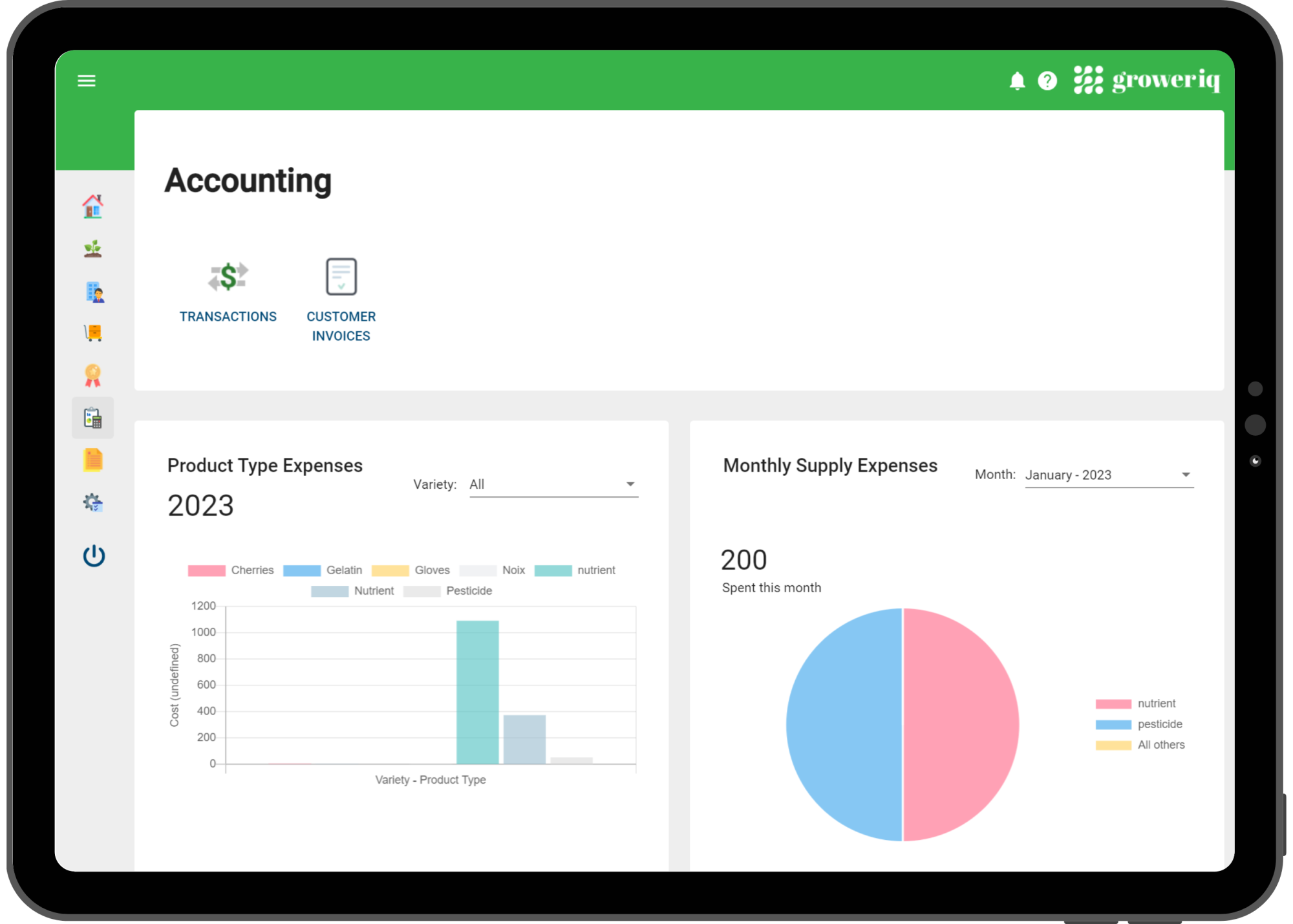Learn to craft a winning Commercial Cultivation Business Plan for high profitability in the thriving cannabis market.
The demand for high-quality cannabis products has skyrocketed. As governments around the world lift restrictions, the potential for a thriving Commercial Cultivation Business Plan is simply unparalleled. But let’s not be fooled by the allure of this green revolution; it takes more than just a green thumb to succeed in this rapidly evolving industry. Let’s embark on a journey that combines the art of cultivation with the precision of business strategy. Whether you’re a seasoned horticulturist looking to capitalize on the booming cannabis industry or a visionary with a passion for sustainable agriculture, this blog is your definitive guide to crafting a successful Cannabis Business Plan.
Commercial Cannabis Cultivation is a Healthy Business To Get Into
The global cannabis market is experiencing tremendous growth, fueled by the legalization of cannabis for both medicinal and recreational purposes in an increasing number of countries. This shift in legislation has opened up new opportunities for entrepreneurs and investors in the cannabis industry, particularly in the area of commercial cultivation.
According to the 2023 State of the Cannabis Cultivation Industry Report produced by Cannabis Business Times, the majority of cultivators (56%) earn more than $250,000 USD of revenue per year. This indicates the high profitability potential of the cannabis cultivation business when approached strategically. With cultivation profit margins ranging between 45-55%, as reported by CohnReznick, it’s clear that this industry can provide a healthy return on investment.

Maximizing Yield and Achieving Desired Terpenes/Cannabinoid Content
In commercial cannabis cultivation, achieving optimal yield and desired terpenes and cannabinoid content is crucial for quality and profitability. A comprehensive business plan should detail strategies, including selecting the right genetics, efficient nutrient delivery, and advanced technologies, to optimize yield. Methods for attaining desired terpenes and cannabinoid content through refined cultivation practices and precise extraction processes should be outlined in the plan.
Pest and Disease Prevention and Control
In cannabis cultivation, preventing and controlling pests and diseases is a major challenge affecting productivity and quality. A robust business plan should detail comprehensive pest management strategies, encompassing preventive measures, monitoring systems, and effective treatment protocols. Ongoing staff training is also crucial to promptly identify and address potential pest and disease issues.
Declining Prices and Competition from the Illicit Market
Cannabis cultivators encounter challenges like declining prices and competition from the illicit market, impacting profit margins. A strong business plan should address this by emphasizing cost optimization, differentiation strategies, and effective marketing to maintain profitability and position the business as a reputable alternative to the illicit market.
Compliance with Local and Federal Regulations
Compliance with diverse and intricate cannabis regulations is crucial for cultivators, as failure can lead to severe penalties, including license loss and legal action. A thorough business plan should detail a comprehensive compliance strategy, covering required permits, licenses, and certifications, along with processes like record-keeping, audits, and proactive engagement with regulatory authorities to ensure ongoing compliance.
Pro Tip for Cannabis Cultivators
Utilizing comprehensive seed-to-sale software is crucial for cultivators as they embark on their business operations. This software provides cultivators with a centralized platform to manage and track every aspect of their cultivation process, ensuring compliance, efficiency, and profitability.

Did you know? GrowerIQ has an industry-leading Seed-to-Sale Cannabis Software (with quality management built in) that is designed to uncomplicate cannabis production for cannabis producers throughout the world.
Related Reading
Executive Summary
When it comes to creating a comprehensive business plan for a commercial cannabis cultivation venture, there are several key components that must be considered. We will explore each of these components in detail and explain why they are crucial for the success of a cannabis cultivation business.

1. Company Summary: Establishing a Strong Foundation
The Company Summary, the first part of your business plan, introduces your cannabis cultivation business by outlining its mission, vision, and values. It also details the legal structure, key team members’ experience, strategic partnerships, and your unique selling proposition, emphasizing what sets your business apart from competitors.
2. Market Opportunities: Identifying a Lucrative Niche
In the Market Opportunities section of your business plan, demonstrate your grasp of the cannabis industry’s potential for growth by analyzing current and projected market size, trends, and demographics. Highlight any regulatory changes and outline your target market, along with marketing and sales strategies, including branding, advertising, and partnerships, to position your cultivation business for long-term success.
3. Start-up Summary: Building a Solid Foundation
In the Start-up Summary section of your business plan, detail the practical aspects of launching your cannabis cultivation business, covering start-up costs like facility acquisition, equipment, licensing, permits, and initial inventory. Outline your cultivation methods, technologies, and techniques, along with a timeline for the start-up process and legal or regulatory considerations.
4. Financial Summary: Demonstrating Profitability and Sustainability
In the Financial Summary of your business plan, showcase the financial viability of your cannabis cultivation business with a comprehensive forecast covering projected revenue, expenses, and cash flow for the initial three to five years. Detail your pricing strategy, including production costs, competitive pricing analysis, and profit margins, along with a break-even analysis and a funding plan, whether through personal investment, loans, or partnerships.
Market Overview
Key components for market overview in a commercial cannabis cultivation business plan:

Global Cannabis Market Conditions
The global cannabis market is experiencing a significant growth trend, driven by the increasing acceptance and legalization of cannabis for medical and recreational use in various countries. As a commercial cannabis cultivator, it is crucial to have a comprehensive understanding of the global market conditions to position your business for success.
1. Market Size and Growth Potential
Start by assessing the size and growth potential of the global cannabis market. This includes analyzing market research reports, industry trends, and forecasts. Identify the estimated market value, growth rate, and future projections to determine the potential demand for your cannabis products.
2. Legal and Regulatory Landscape
Explore the legal and regulatory frameworks governing cannabis cultivation and sales in different countries or regions. Understand the licensing requirements, restrictions, and any potential barriers to entry. Stay updated on changes in legislation to ensure compliance and mitigate risks.
3. Competitive Analysis
Conduct a thorough analysis of the competitive landscape in the global cannabis market. Identify key players, their market share, product offerings, pricing strategies, and distribution channels. This analysis will help you identify gaps in the market and differentiate your business.
Local Cannabis Market
While understanding the global market is vital, focusing on the local cannabis market specific to your cultivation business is equally important. Let’s take Canada as an example to illustrate the key components to consider:
1. Market Size and Demand
Assess the size of the Canadian cannabis market and the demand for various cannabis products. Identify the target consumer segments, their preferences, and consumption patterns. Understanding the potential market size will help you determine your cultivation capacity and production goals.
2. Regulatory Environment
Familiarize yourself with the regulations set by Health Canada, the governing body for cannabis cultivation and sales. Understand the licensing requirements, compliance standards, and any specific regulations for each cannabis product category. Complying with regulations is crucial to avoid penalties and ensure the smooth operation of your cultivation business.
3. Local Competition
Analyze the competitive landscape within the Canadian cannabis market. Identify existing licensed producers, their market share, and their strengths and weaknesses. Evaluate their branding, product range, pricing, and distribution strategies to find opportunities for differentiation and competitive advantage.
SWOT Analysis to Uncover Your Strategy
Conducting a SWOT (Strengths, Weaknesses, Opportunities, and Threats) analysis is a crucial step in the market overview section of your cannabis cultivation business plan. It helps you identify internal strengths and weaknesses, as well as external opportunities and threats, enabling you to develop a clear strategy for your business.
1. Strengths
Identify the unique strengths of your cannabis cultivation business, such as proprietary genetics, experienced cultivation team, advanced technology, or strategic partnerships. Leverage these strengths to position your business as a leader in the market and attract investors or partners.
2. Weaknesses
Recognize the weaknesses or challenges your business may face, such as limited capital, lack of brand recognition, or limited distribution channels. Develop strategies to address these weaknesses to minimize their impact on your growth and market penetration.
3. Opportunities
Identify the potential opportunities in the market that align with your business goals. This may include emerging product categories, untapped markets, or partnerships with retailers or other cannabis businesses. Capitalize on these opportunities to expand your market share and revenue streams.
4. Threats
Assess the external threats that could impact your cannabis cultivation business. This may include regulatory changes, market saturation, or competition from larger, established producers. Develop contingency plans to mitigate these threats and ensure the sustainability of your business.
Related Reading
- Cannabis Business Consultants
- Cannabis Dispensary Business Plan
- Seed To Sale Funding
- Cannabis Licensing Consultant
- Seed To Sale Crm
- Cultivation Sop Template
- Cannabis Cultivation Business Plan
- Cannabis Venture Capital
- Grants For Cannabis Business
Sales Strategy
Building a successful commercial cannabis cultivation business requires a well-thought-out sales strategy. In order to thrive in this competitive industry, it is essential to consider key components such as a marketing plan, competitor analysis, and sales forecast. Let’s dive into each of these components to understand their importance and how they contribute to the overall success of a commercial cannabis cultivation business.

1. Crafting a Compelling Marketing Plan
A robust marketing plan is crucial for any commercial cannabis cultivator aiming to stand out in the market. It involves identifying target customers, understanding their needs and preferences, and devising strategies to reach and engage them effectively. Here are a few elements to consider:
a. Branding and Positioning
Develop a strong brand identity that reflects the values and Unique Selling Proposition (USP) of your cultivation business. Clearly define your brand’s positioning and messaging to differentiate yourself from competitors.
b. Product Portfolio
Identify the types of cannabis products you will cultivate and establish a clear value proposition for each. Highlight the benefits, quality, and specific characteristics that set your products apart.
c. Digital Presence
Having a strong online presence is essential. Build a user-friendly, informative website and leverage social media platforms to engage with your target audience, share educational content, and promote your products.
d. Community Engagement
Create a sense of community around your brand by participating in industry events, sponsoring local initiatives, and supporting cannabis advocacy groups. This helps cultivate a loyal customer base and enhances your brand reputation.
2. Conducting a Thorough Competitor Analysis
Understanding and analyzing your competitors is vital for gaining a competitive edge in the commercial cannabis cultivation market. Conducting a comprehensive competitor analysis allows you to identify their strengths, weaknesses, market positioning, and strategies. Here are some steps to consider:
a. Identify Competitors
Determine who your direct and indirect competitors are in the market. Direct competitors are those who offer similar cannabis products, while indirect competitors may include alternative products or substitutes.
b. Evaluate Strengths and Weaknesses
Assess your competitors’ strengths and weaknesses, such as their cultivation techniques, product quality, branding, distribution channels, and customer base. Identify areas where you can differentiate yourself and capitalize on their weaknesses.
c. Analyze Pricing Strategies
Study your competitors’ pricing models to understand their pricing strategies. Determine whether you want to position your products as premium or offer competitive pricing based on market demand and your business goals.
d. Monitor Marketing and Promotional Activities
Keep a close eye on your competitors’ marketing and promotional efforts. Analyze their messaging, target audience, advertising channels, and engagement tactics. Look for opportunities to differentiate your brand and attract customers through targeted marketing campaigns.
3. Developing an Accurate Sales Forecast
Creating a realistic sales forecast is crucial for financial planning and decision-making. It helps establish revenue goals, determine production capacity, and allocate resources efficiently. Here are some steps to consider when developing a sales forecast:
a. Market Research
Conduct thorough market research to gather data on the size of the cannabis market, demand trends, and growth projections. This will provide a foundation for estimating your potential market share.
b. Define Sales Channels
Identify the different sales channels through which you plan to distribute your products. This can include dispensaries, delivery services, wholesalers, or online platforms. Assess each channel’s potential reach and revenue contribution.
c. Analyze Pricing and Volume
Determine the pricing strategy for your cannabis products and estimate the average revenue per unit sold. Consider factors such as production costs, market demand, and competitive pricing. Project the volume of sales based on market research and anticipated customer demand.
d. Consider Seasonality and Regulatory Factors
Take into account any seasonal fluctuations in demand and the impact of regulatory changes on sales. Anticipate how these factors may influence your sales forecast and adjust your projections accordingly.
Related Reading
- Cannabis Cultivation Software
- Cannabis Inventory Software
- Cannabis Distribution Software
- Cannabis Growing Consultants
- Cannabis Angel Investors
Operating Plan
Key components for a commercial cannabis cultivator’s operating plan:

Cultivation Facility Plan: Creating the Perfect Growing Environment
In a commercial cannabis cultivation business plan, the cultivation facility plan is vital, detailing the design, layout, and operations of the growing facility, including size, growing methods, room layout, and necessary equipment. To create an optimal environment, factors like lighting, temperature, humidity, ventilation, and irrigation systems must be considered and outlined in the plan to ensure the health and productivity of the cannabis plants.
Physical Security Plan: Safeguarding the Cannabis Operation
A strong physical security plan is crucial for safeguarding a cannabis cultivation facility, addressing risks like theft and unauthorized access. This plan should encompass measures such as perimeter security, access control, video surveillance, alarms, and secure storage solutions, while also outlining employee security protocols like background checks and clear handling policies for sensitive information and products.
Transportation Plan: Safely Moving Cannabis Products
For the secure movement of cannabis products, a thorough transportation plan is essential, detailing procedures for packaging, loading, and transporting while ensuring compliance with laws. This plan should cover proper packaging and labeling, securing products during transit, and maintaining chain of custody documentation, along with measures to minimize theft, diversion, or tampering.
Packaging and Labeling: Ensuring Compliance and Consumer Safety
In the commercial cannabis industry, packaging and labeling are crucial for compliance and consumer safety. A well-defined plan should include guidelines for child-resistant packaging, product information, batch and lot numbers, warning labels, and explore eco-friendly materials and innovative designs that comply with regulations and enhance product appeal.
Tracking Solution: Ensuring Accountability and Compliance
For the traceability and accountability of cannabis products, a tracking solution is essential, capturing data throughout the cultivation and distribution process from seed to sale. The plan should detail the use of technology like Radio Frequency Identification (RFID) tags tags or barcodes for inventory tracking, plant monitoring, and regulatory compliance, along with protocols for data management, reporting, and auditing to ensure accurate records and compliance with laws.
Pro Tip for Cannabis Cultivators
The use of seed to sale software is essential for the successful operation of a commercial cultivation business plan. This software enables businesses to efficiently track and manage every step of the cannabis production process, from seed to sale.
Financial Plan
Key components for the financial plan of a commercial cannabis cultivation business plan:
Funding Analysis
One of the key components of a commercial cannabis cultivation business plan is a comprehensive funding analysis. It’s essential to provide a breakdown of funding sources like personal savings, loans, investments, or partnerships to showcase a solid financial strategy.
Direct and Operating Expense Breakdown
In the financial plan, it’s crucial to detail both direct expenses, directly tied to cultivation like seeds, nutrients, and labor, and operating expenses, covering business costs such as rent, insurance, and marketing. Clear identification and categorization of these expenses simplify tracking and managing the financial health of the cultivation business.
Profit & Loss Forecast
In the financial plan of a cannabis cultivation business, the profit and loss forecast projects revenue and expenses over a specific period, offering insight into expected profitability. It should encompass revenue from cannabis sales and other potential streams like ancillary services or partnerships, aiding in identifying areas for improvement.

Cash Flow Statement
The cash flow statement, vital in the financial plan, tracks money movement in and out of a cannabis cultivation business. It predicts and manages liquidity, covering cash inflows from revenue, investments, and financing, and outflows from expenses and financial activities, ensuring financial health and avoiding pitfalls.
Balance Sheet
The balance sheet, crucial in the financial plan, offers a snapshot of a cannabis cultivation business’s financial position, detailing assets, liabilities, and equity. Assets like property or cash, liabilities such as debts, and equity indicating ownership interest are all included, providing insights into the overall financial health and stability of the business.
Main Ratios to Track
For the success and profitability of a cannabis cultivation business, it’s crucial to monitor key ratios that offer insights into financial performance. Key ratios include gross margin, operating margin, return on investment, and current ratio, providing valuable information for informed financial decisions and strategic adjustments.
Discover how GrowerIQ’s seed-to-sale software can help you set up all of the administrative components of a successful cannabis cultivation operation, without any hassle. Questions we haven’t covered? Please reach out and let us know. GrowerIQ serves clients coast to coast, and we’re ready to help your team today.
Streamline Cannabis CultivationRecommended For You
Unlock the Secret to Thriving Greenery: Discover the Best Organic Fertilizer for Seedlings Today!
December 30, 2025Cannabis Conventions: Where Innovation Meets Culture in the Heart of the Green Revolution
December 29, 2025Unlocking Secrets to Transforming Hermaphroditic Cannabis Plants into Growing Goldmines
December 26, 2025About GrowerIQ
GrowerIQ is changing the way producers use software - transforming a regulatory requirement into a robust platform to learn, analyze, and improve performance.
To find out more about GrowerIQ and how we can help, fill out the form to the right, start a chat, or contact us.

